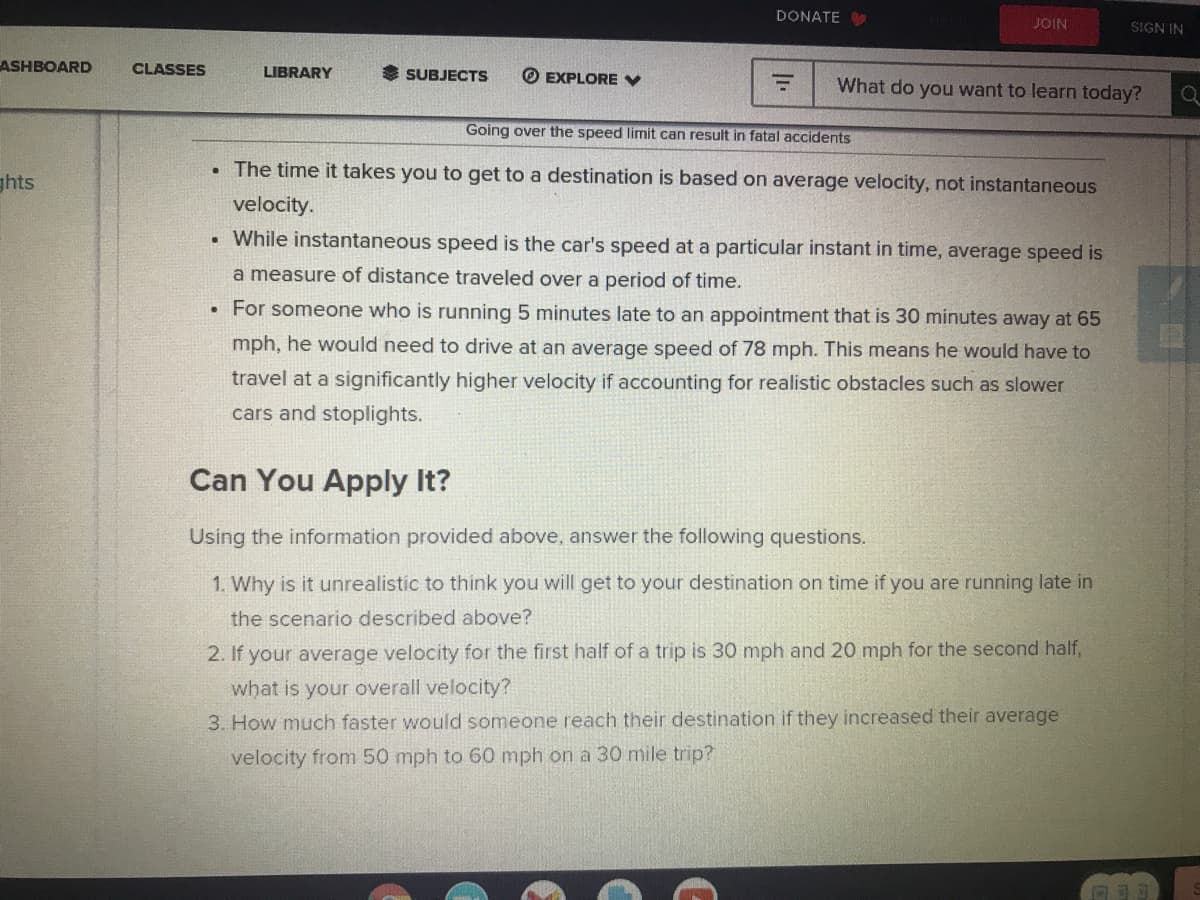1. Why is it unrealistic to think you will get to your destination on time if you are running late in the scenario described above? 2. If your average velocity for the first half of a trip is 30 mph and 20 mph for the second half, what is your overall velocity? 3. How much faster would someone reach their destination if they increased their average velocity from 50 mph to 60 mph on a 30 mile trip?
1. Why is it unrealistic to think you will get to your destination on time if you are running late in the scenario described above? 2. If your average velocity for the first half of a trip is 30 mph and 20 mph for the second half, what is your overall velocity? 3. How much faster would someone reach their destination if they increased their average velocity from 50 mph to 60 mph on a 30 mile trip?
Astronomy
1st Edition
ISBN:9781938168284
Author:Andrew Fraknoi; David Morrison; Sidney C. Wolff
Publisher:Andrew Fraknoi; David Morrison; Sidney C. Wolff
Chapter24: Black Holes And Curved Spacetime
Section: Chapter Questions
Problem 12E: A monkey hanging from a tree branch sees a hunter aiming a rifle directly at him. The monkey then...
Related questions
Question

Transcribed Image Text:DONATE
JOIN
SIGN IN
ASHBOARD
CLASSES
LIBRARY
SUBJECTS
O EXPLORE V
What do you want to learn today?
Going over the speed limit can result in fatal accidents
The time it takes you to get to a destination is based on average velocity, not instantaneous
ghts
velocity.
While instantaneous speed is the car's speed at a particular instant in time, average speed is
a measure of distance traveled over a period of time.
For someone who is running 5 minutes late to an appointment that is 30 minutes away at 65
mph, he would need to drive at an average speed of 78 mph. This means he would have to
travel at a significantly higher velocity if accounting for realistic obstacles such as slower
cars and stoplights.
Can You Apply It?
Using the information provided above, answer the following questions.
1. Why is it unrealistic to think you will get to your destination on time if you are running late in
the scenario described above?
2. If your average velocity for the first half of a trip is 30 mph and 20 mph for the second half,
what is your overall velocity?
3. How much faster would someone reach their destination if they increased their average
velocity from 50 mph to 60 mph on a 30 mile trip?
Expert Solution
This question has been solved!
Explore an expertly crafted, step-by-step solution for a thorough understanding of key concepts.
This is a popular solution!
Trending now
This is a popular solution!
Step by step
Solved in 2 steps

